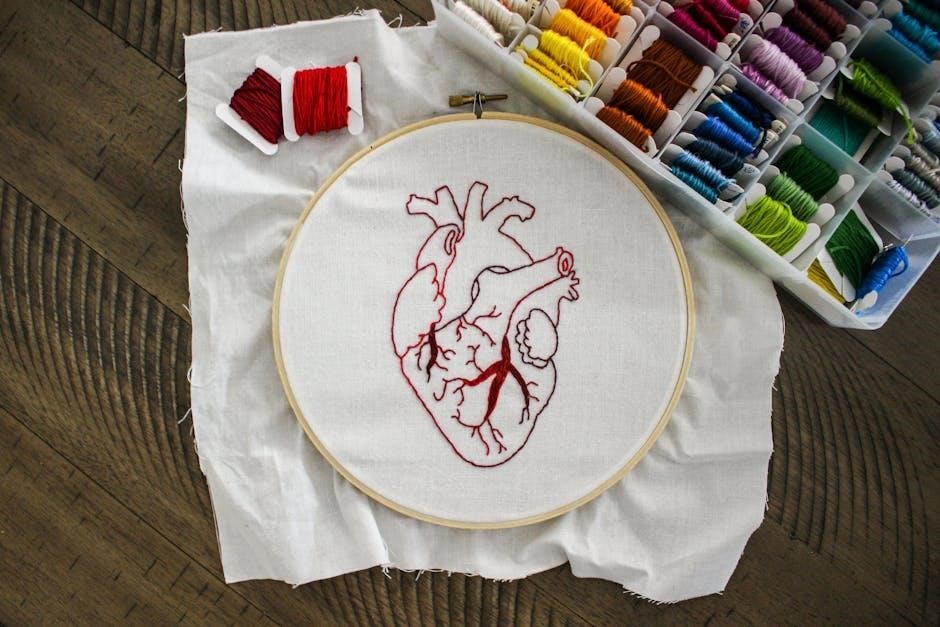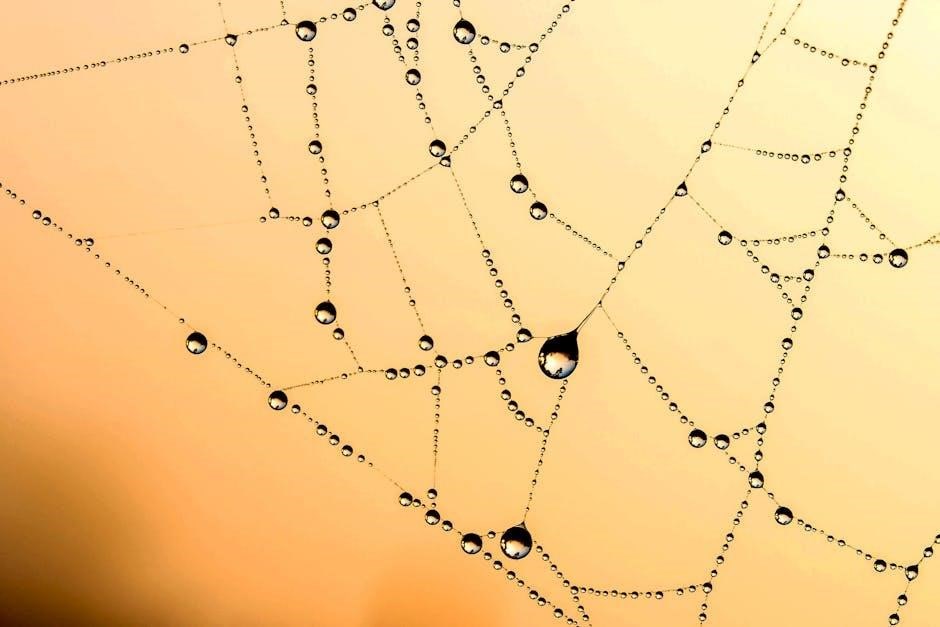Thread galling occurs when bolt threads seize to threads of a nut or tapped hole due to pressure and friction, discussed in thread galling pdf files and online resources available․
Definition of Thread Galling
Thread galling is a phenomenon where two threaded surfaces, typically a bolt and a nut or a tapped hole, become seized due to excessive pressure and friction․ This condition can lead to significant damage to the threads, making it difficult or impossible to separate the two components․ According to various thread galling pdf resources, galling is often referred to as a cold-welding process, where the surfaces of the male and female threads bond together under heavy pressure․ The definition of thread galling is crucial in understanding the causes and consequences of this issue, which can have significant implications in various industries, including manufacturing, construction, and engineering․ By understanding the definition of thread galling, professionals can take proactive measures to prevent its occurrence and ensure the smooth operation of threaded fasteners․ Thread galling pdf files provide detailed information on this topic․

Causes of Thread Galling
Pressure and friction cause thread galling, discussed in thread galling pdf files and online resources available for reference and study purposes every day always․
Susceptible Fasteners
Fasteners made of certain materials are more susceptible to thread galling, as discussed in thread galling pdf files and online resources․ Stainless steel fasteners are particularly prone to galling due to their high friction coefficient․ Other materials that can be susceptible to galling include aluminum and titanium․ The susceptibility of these materials to galling is due to their high strength and low ductility, which can cause them to seize and gall when subjected to high pressures and friction․ Additionally, fasteners with coarse or rough thread surfaces can also be more susceptible to galling․ It is essential to consider the material and surface finish of fasteners when selecting them for applications where thread galling may be a concern․ By understanding the characteristics of susceptible fasteners, designers and engineers can take steps to prevent thread galling and ensure reliable operation of threaded joints․ Proper selection of fasteners is crucial․

Prevention of Thread Galling
Preventing thread galling involves using proper techniques and materials, as outlined in thread galling pdf guides and resources available online for reference and education purposes always․
Using Lubricant
Using lubricant is a common method to prevent thread galling, as discussed in various thread galling pdf files and online resources․ The suggested lubricants should contain substantial amounts of molybdenum disulfide, graphite, mica, or talc․ These lubricants can be applied to the internal and/or external threads to reduce friction and prevent galling․ Lubricating the threads frequently can eliminate thread galling and ensure smooth assembly and disassembly of threaded fasteners․ The use of lubricant is a simple and effective way to prevent thread galling, and it is widely recommended in the industry․ By applying lubricant to the threads, the risk of galling can be significantly reduced, and the performance and reliability of the threaded fasteners can be improved․ This method is widely used in various applications, including industrial, automotive, and aerospace industries, as outlined in thread galling pdf guides and resources․
Slowing Installation Speed
Slowing installation speed is another method to prevent thread galling, as outlined in thread galling pdf files and online resources․ One of the triggers for galling is heat, which can be generated by fast assembly speeds․ By slowing down the installation speed, the heat generated can be reduced, and the risk of galling can be minimized․ This method is particularly effective when used in combination with other preventative measures, such as lubrication and proper thread design․ Slowing installation speed can be achieved through the use of specialized tools and equipment, such as torque wrenches and screwdrivers with built-in speed limiters․ By controlling the installation speed, the risk of thread galling can be significantly reduced, and the reliability and performance of the threaded fasteners can be improved, as discussed in various thread galling pdf guides and resources available online․ This approach is widely recommended in the industry․

Thread Care and Maintenance
Proper thread care and maintenance are crucial to prevent damage and ensure optimal performance, as outlined in thread galling pdf guides and online resources available for reference purposes always․
Thread Pitch and Thread Damage
Thread pitch is a critical factor in preventing thread damage and galling, as discussed in thread galling pdf files․ A proper thread pitch ensures smooth engagement and reduces the risk of thread damage․ The thread pitch is the distance between two adjacent threads, and it plays a significant role in determining the strength and durability of the threaded connection․ Thread damage can occur due to various reasons, including over-tightening, cross-threading, and corrosion․ It is essential to inspect the threads regularly to detect any signs of damage or wear․ By maintaining the correct thread pitch and inspecting the threads regularly, thread damage can be prevented, and the risk of galling can be minimized․ Proper thread care and maintenance are crucial to ensure optimal performance and extend the lifespan of the threaded connection, as outlined in thread galling pdf guides and online resources․
Debris in Thread and Thread Engagement
Debris in threads can significantly affect thread engagement and lead to galling, as discussed in thread galling pdf files․ The presence of debris, such as dirt, dust, or metal shavings, can cause the threads to bind and seize, resulting in galling․ Proper cleaning and inspection of the threads before engagement can help prevent debris-related issues․ Thread engagement is also critical, as it can affect the overall performance of the threaded connection․ The threads should be engaged slowly and carefully to prevent cross-threading and damage․ Regular maintenance and inspection can help identify potential issues before they become major problems․ By following proper thread care and maintenance procedures, debris-related issues can be minimized, and thread engagement can be optimized, reducing the risk of galling and ensuring a secure and reliable connection, as outlined in thread galling pdf guides and online resources available today․

Assembly and Tightening Practices
Proper assembly and tightening practices are crucial to prevent thread galling, as outlined in thread galling pdf guides and online resources available for reference and study purposes always․
Part Alignment and Tightening Practice
Proper part alignment and tightening practice are essential to prevent thread galling, as discussed in thread galling pdf files and online resources․
The alignment of parts is critical to ensure that the threads are properly engaged and that the tightening process is smooth and even․
A improper alignment can lead to uneven pressure and friction, which can cause thread galling․
The tightening practice should also be carefully controlled to avoid over-tightening, which can also lead to thread galling․
The use of proper tools and techniques, such as torque wrenches and tightening sequences, can help to ensure that the parts are properly aligned and tightened․
By following proper part alignment and tightening practices, the risk of thread galling can be significantly reduced, and the reliability and performance of the assembly can be improved․
This is especially important in critical applications where thread galling can have serious consequences․
Preventative Measures
Preventative measures are crucial to avoid thread galling, and several strategies can be employed to minimize its occurrence․
Using insert lock nuts is one such measure, which helps to distribute the pressure and friction evenly, reducing the risk of galling․
Additionally, ensuring proper thread engagement and using debris-free threads can also help to prevent galling․
Regular maintenance and inspection of threads can also help to identify potential issues before they become major problems․
The use of thread conditioners or coatings can also provide a barrier between the threads, reducing friction and preventing galling․
By implementing these preventative measures, the risk of thread galling can be significantly reduced, and the reliability and performance of the assembly can be improved․
These measures can be especially important in critical applications where thread galling can have serious consequences, and can help to ensure the safe and efficient operation of equipment and machinery․
